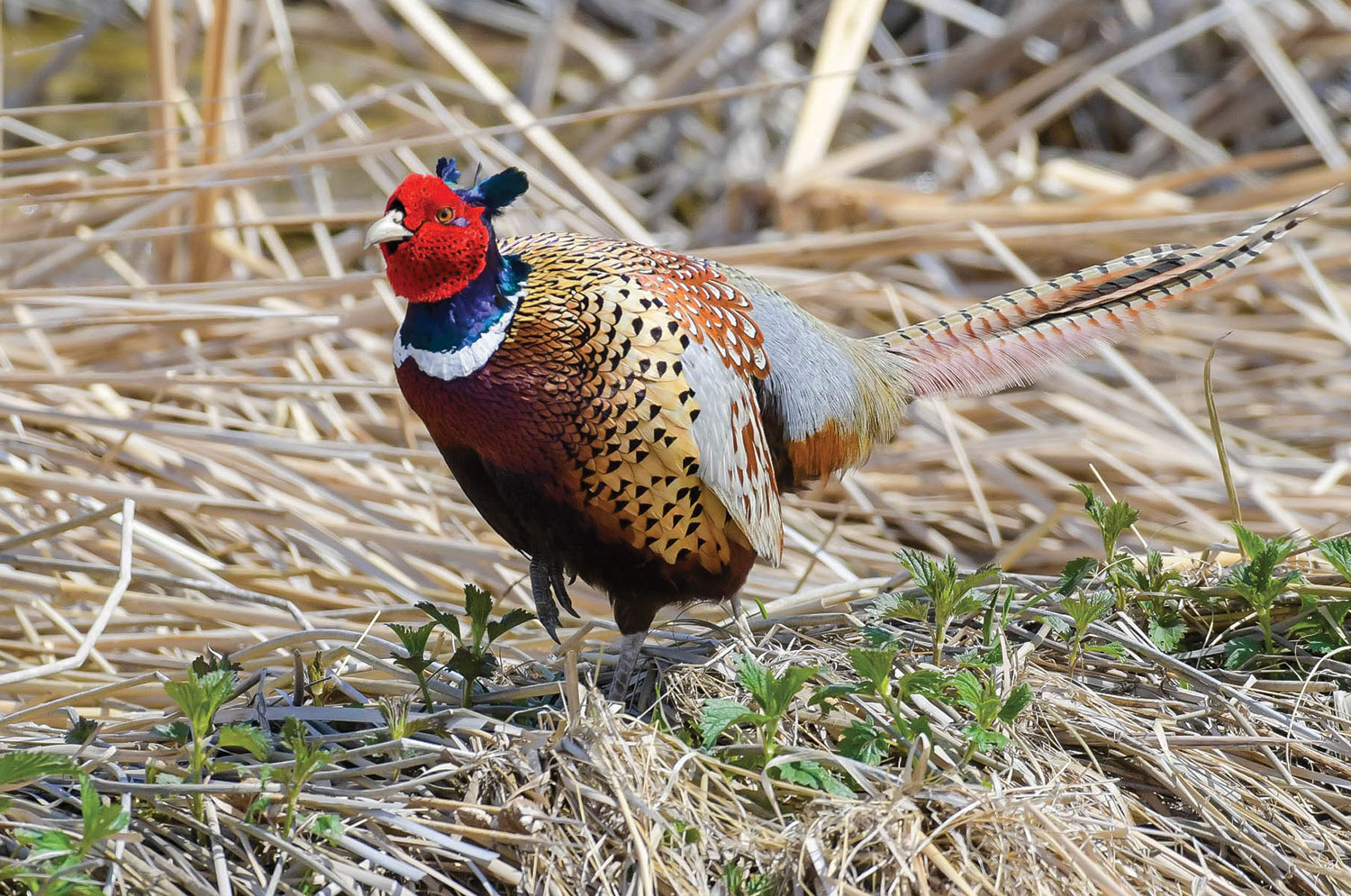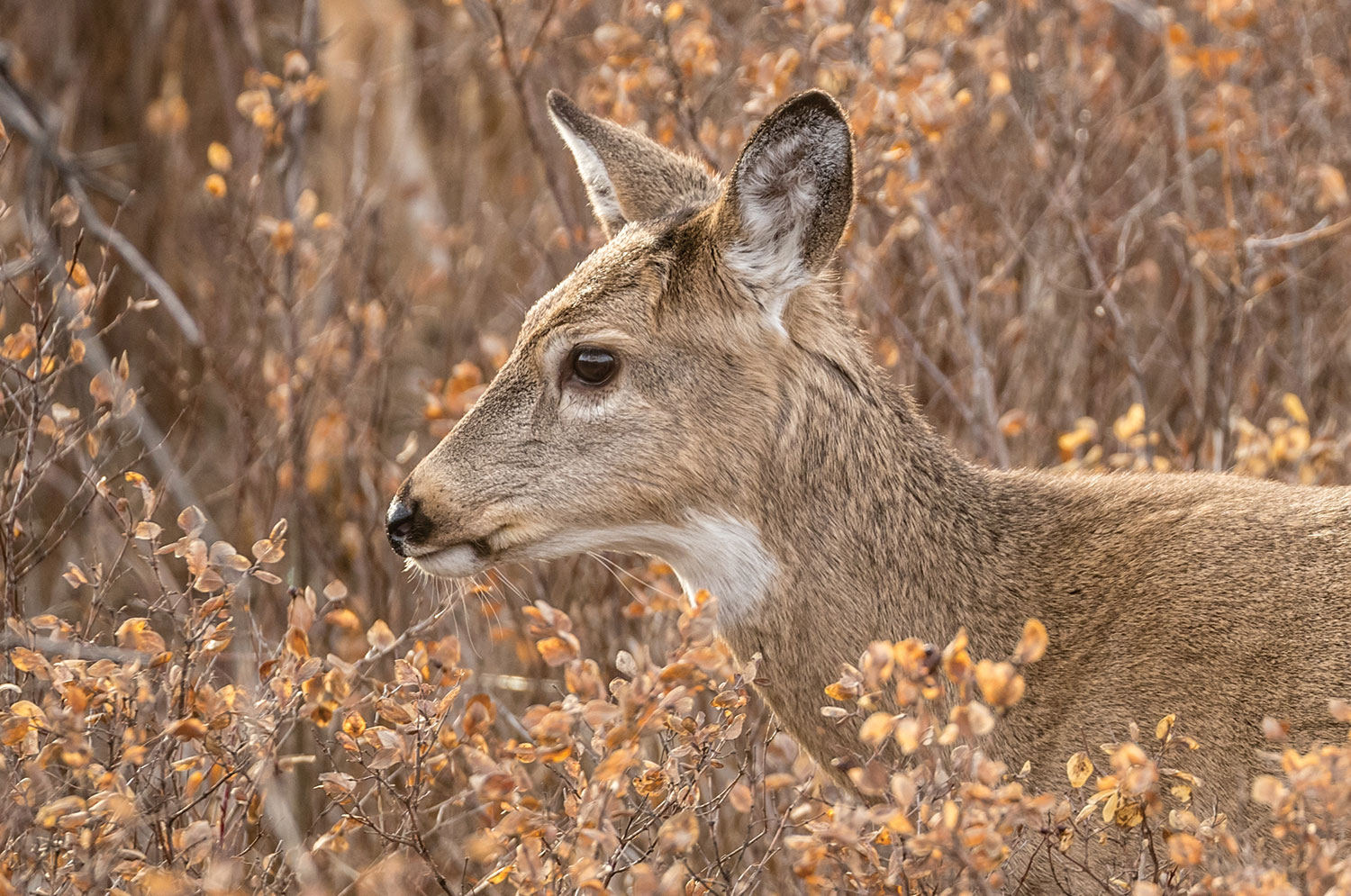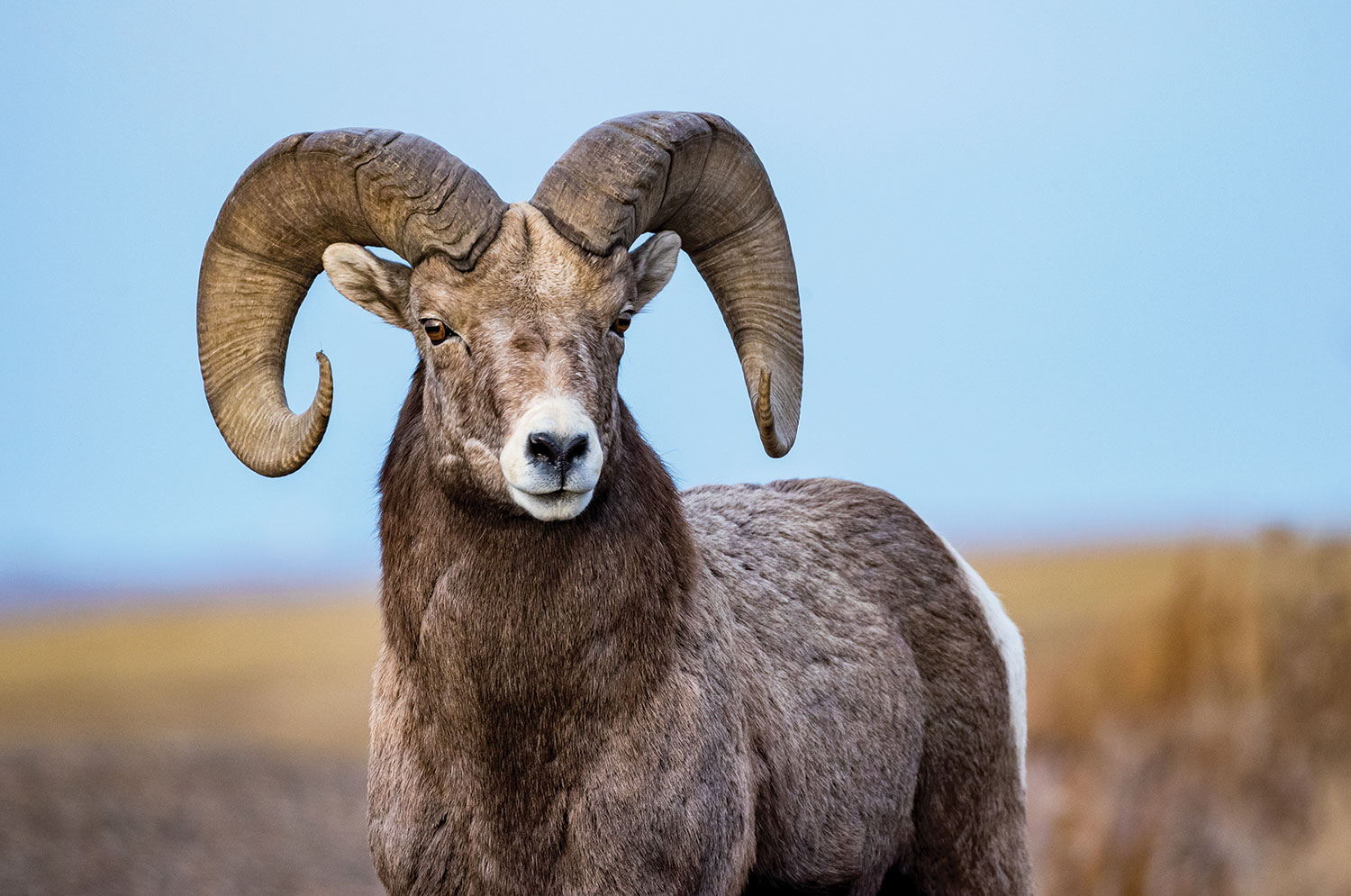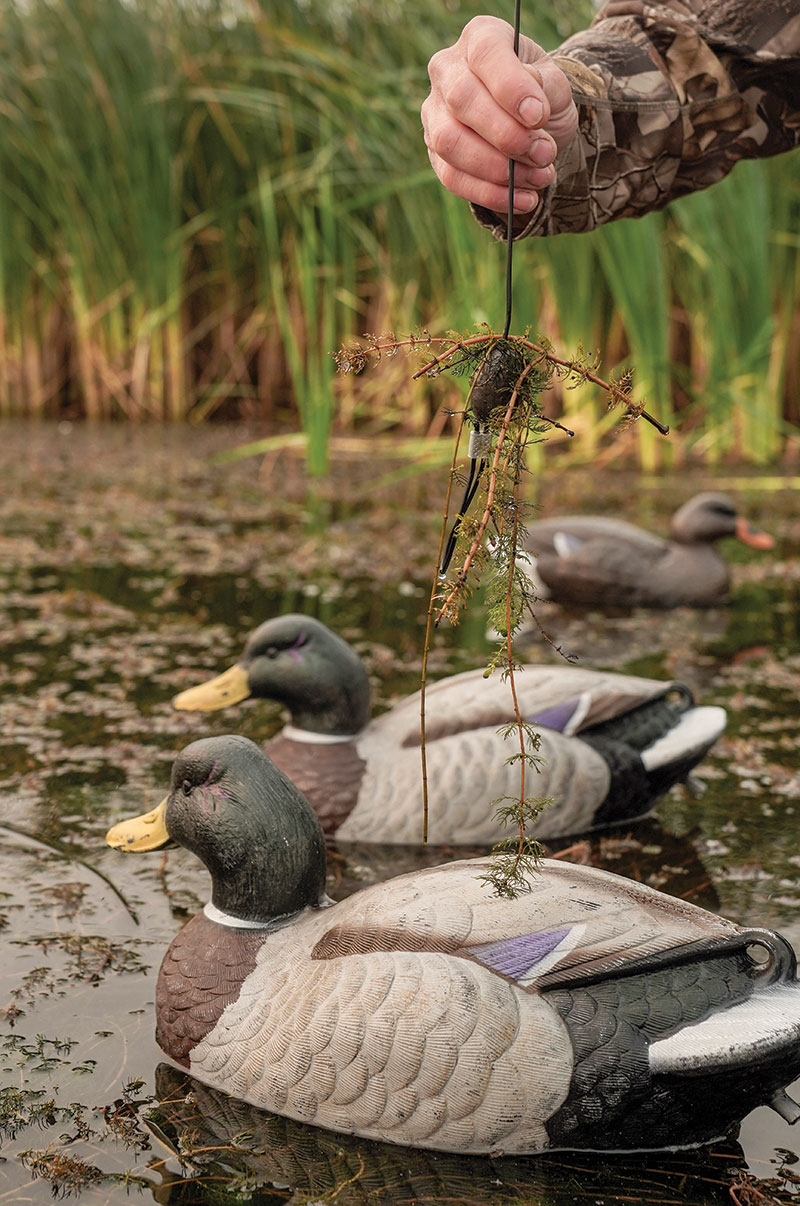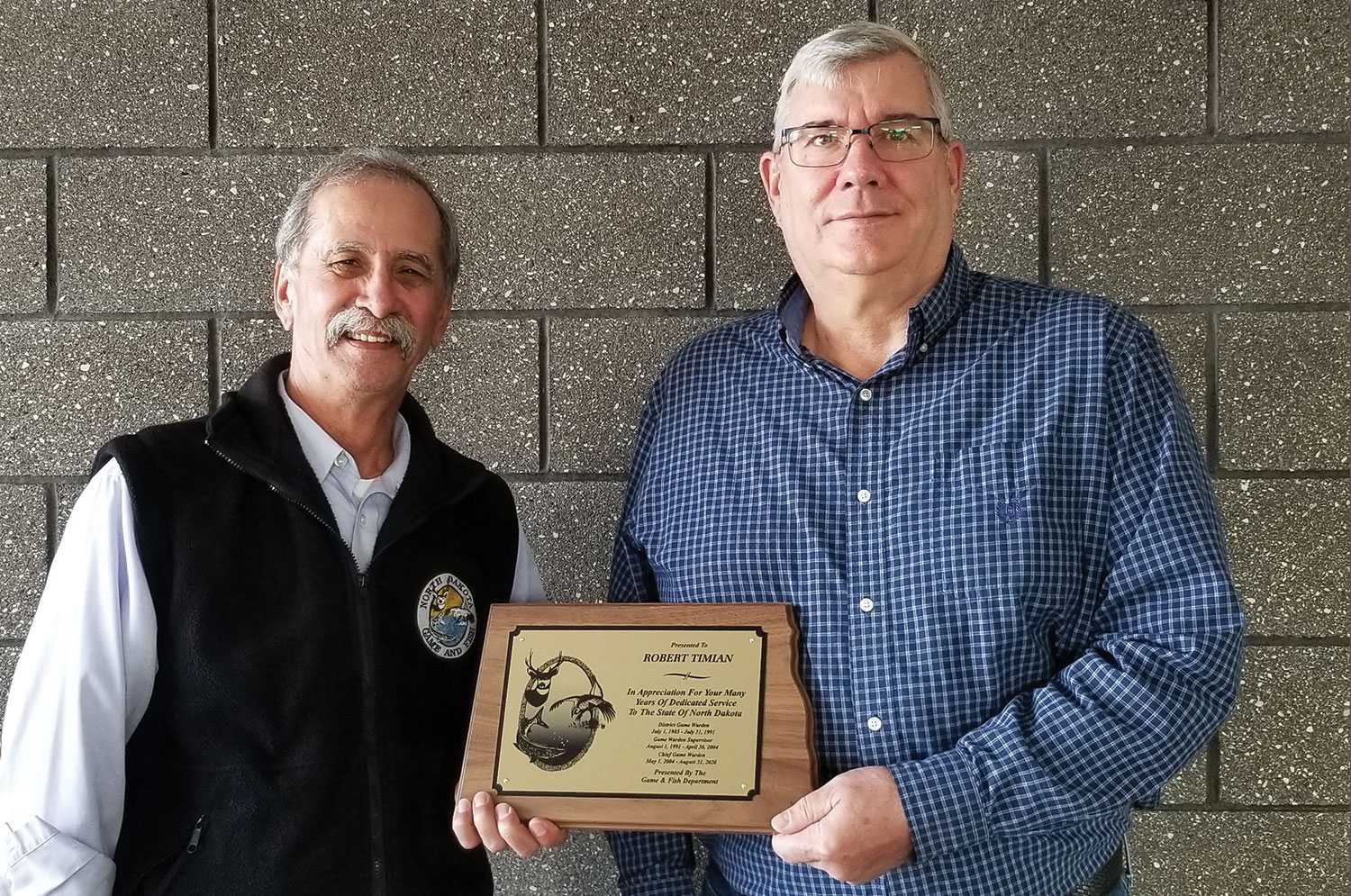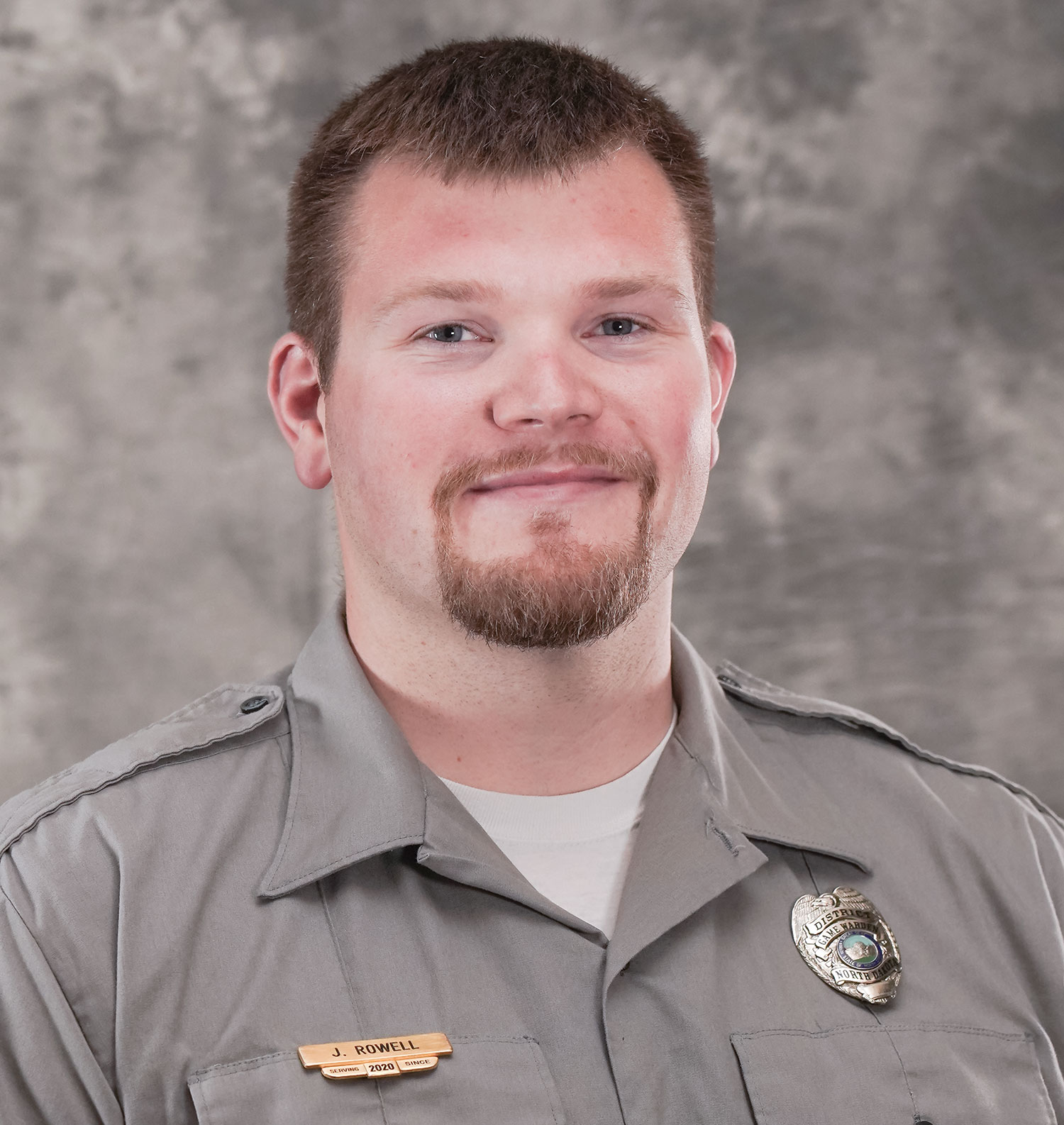North Dakota’s roadside surveys conducted in late July and August indicate pheasant, sharp-tailed grouse and gray partridge numbers are up from last year.
State Game and Fish Department upland game biologist RJ Gross said results of the annual upland late summer counts brought some good news. “We had good residual cover to start the year, and good weather for nesting and brood-rearing,” he said. “There were some areas that experienced abnormally dry periods throughout the summer, but nesting appeared to be successful.”
Total pheasants observed per 100 miles are up 38% from last year, but 14% below the 10-year average. Broods per 100 miles are up 30% from last year and 16% below the 10-year average. Average brood size is up 10% from 2019 and 5% below the 10-year average. The final summary is based on 275 survey runs made along 100 brood routes across North Dakota.
“While these numbers are encouraging, it’s important to remember that bird numbers in the last five years have been lower than what upland game hunters have been use to for many years, due to changing habitat conditions and the drought of 2017,” Gross said. “For context, these numbers put us about half-way back to where we were prior to the 2017 drought. Local populations are building back up, but they are not at the point yet of spreading out into new territories. Hunters will need to find localized hotspots of pheasants.”
Observers in the northwest counted 12 broods and 91 pheasants per 100 miles, up from five broods and 39 pheasants in 2019. Average brood size was six.
Results from the southeast showed five broods and 41 pheasants per 100 miles, down from six broods and 51 pheasants in 2019. Average brood size was five.
Statistics from southwestern North Dakota indicated eight broods and 70 pheasants per 100 miles, up from six broods and 41 pheasants in 2019. Average brood size was six chicks.
The northeast district, generally containing secondary pheasant habitat with lower pheasant numbers compared to the rest of the state, showed three broods and 22 pheasants per 100 miles, compared to three broods and 15 pheasants last year. Average brood size was six.
Sharptails observed per 100 miles are up 54% statewide, and partridge are up 45%.
Brood survey results show statewide increases in number of grouse and broods observed per 100 miles. Observers recorded two sharptail broods and 21 sharptails per 100 miles. Average brood size was six.
Although partridge numbers have shown a slight increase, Gross said most of the partridge harvest is incidental while hunters pursue grouse or pheasants. Partridge densities in general, he said, are too low to target. Observers recorded one partridge brood and 10 partridge per 100 miles. Average brood size was 10.
The pheasant season opens Oct. 10 and continues through Jan. 3, 2021. The two-day youth pheasant hunting weekend, when legally licensed residents and nonresidents ages 15 and younger can hunt statewide, is set for Oct. 3-4.
The grouse and partridge seasons opened Sept. 12 and continues through Jan. 3, 2021.
Deer hunters are reminded of a state law that requires hunters to purchase a general game and habitat license before receiving a deer license.
North Dakota Century Code 20.1-03-02 reads, “a person may not acquire any resident or nonresident license to hunt, catch, take or kill any small game or big game animal unless that person first obtains an annual general game license.”
The North Dakota Game and Fish Department will only mail deer licenses after the general game and habitat license is purchased.
The general game and habitat license can be purchased online by visiting My Account at the Game and Fish website, gf.nd.gov.
Also, it’s important to locate your deer license and check it for accuracy, making sure the unit and species is what is intended.
Deer hunters who can’t find their deer license and who have already purchased their general game and habitat license, can get a replacement license by printing out a duplicate (replacement) license application online, or can request an application by calling 701-328-6300.
The form must be completed and notarized, and sent back to the Department with the appropriate fee.
The Game and Fish Department allocated six bighorn sheep licenses for the 2020 hunting season, one more than last year.
Two licenses were issued in units B1 and B4, and one license in B3. In addition, one license, as authorized under North Dakota Century Code, was auctioned in March by the Midwest Chapter of the Wild Sheep Foundation, from which all proceeds are used to enhance bighorn sheep management in North Dakota.
The number of once-in-a-lifetime licenses allotted to hunters is based on data collected from the Game and Fish Department's summer population survey. Brett Wiedmann, big game management biologist in Dickinson, said results showed a 22% increase in ram numbers from 2019 due primarily to high lamb survival last year.
“Our objective this hunting season is to maximize hunter opportunity in the northern badlands where ram numbers are strong while continuing to reduce the number of rams in the southern badlands, to lessen the risk of transmitting disease to the northern population,” Wiedmann said, while mentioning the concern is the ongoing effects of the bacterial pneumonia outbreak that was first detected in 2014 that resulted in a loss of 15-20% of the adult population.
Wiedmann noted there are more than 300 bighorn sheep north of Interstate 94, but fewer than 20 south of the interstate.
Game and Fish announced in February the status of the bighorn sheep hunting season would be determined after completion of the summer population survey. Prospective hunters were required to apply for a bighorn license earlier this year on the bighorn sheep, moose and elk application. A record 16,935 applicants applied for bighorn sheep. Successful applicants have been notified.
Motorists are reminded to watch for deer along roadways this time of year because juvenile animals are dispersing from their home ranges.
October through early December is the peak period for deer-vehicle accidents. Motorists are advised to slow down and exercise caution after dark to reduce the likelihood of encounters with deer along roadways. Most deer-vehicle accidents occur primarily at dawn and dusk when deer are moving around.
Motorists should be aware of warning signs signaling deer are in the area. When you see one deer cross the road, look for a second or third deer to follow. Also, pay attention on roadways posted with Deer Crossing Area caution signs.
Deer-vehicle accidents are at times unavoidable. If an accident does happen, law enforcement authorities do not have to be notified if only the vehicle is damaged. However, if the accident involves personal injury or other property damage, then it must be reported.
In addition, a permit is still required to take parts or the whole carcass of a road-killed deer. Permits are free and available from game wardens and local law enforcement offices.
A few precautions can minimize chances of injury or property damage in a deer-vehicle crash.
- Always wear your seat belt.
- Don’t swerve or take the ditch to avoid hitting a deer. Try to brake as much as possible and stay on the roadway. Don’t lose control of your vehicle or slam into something else to miss the deer. You risk less injury by hitting the deer.
- If you spot deer ahead, slow down immediately and honk your horn.
Waterfowl hunters need to do their part in preventing the spread of aquatic nuisance species into or within North Dakota.
Waterfowl hunters must remove plants and plant fragments from decoys, strings and anchors; remove plant seeds and plant fragments from waders and other equipment before leaving hunting areas; remove all water from decoys, boats, motors, trailers and other watercraft; and remove all aquatic plants from boats and trailers before leaving a marsh or lake. In addition, hunters are encouraged to brush their hunting dogs free of mud and seeds.
Cattails and bulrushes may be transported as camouflage on boats. All other aquatic vegetation must be cleaned from boats prior to transportation into or within North Dakota.
In addition, drain plugs on boats must remain pulled when a boat is in transit away from a water body.
More ANS information, including regulations, is available online.
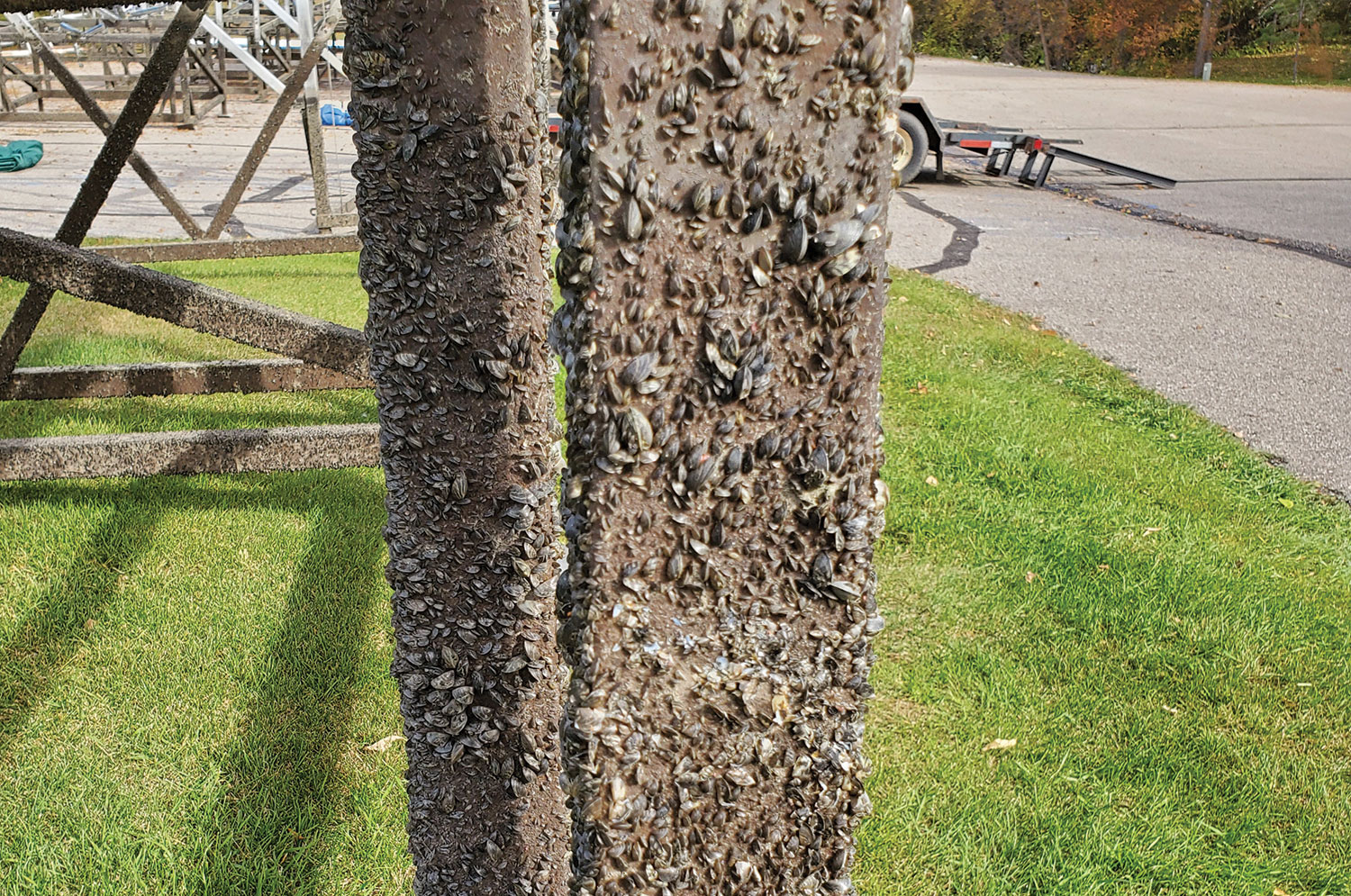
Boat lifts pulled from Lake Ashtabula.
The North Dakota Game and Fish Department is asking water recreationists and property owners to check for zebra mussels and other aquatic nuisance species when removing boat lifts, docks and other equipment from state waters.
ANS coordinator Ben Holen said zebra mussels attach to hard surfaces that are left in the water for long periods of time, first settling in tight spaces and areas that are protected from sunlight. He said this is a great opportunity for members of the public to assist in ANS detection efforts because the earlier a new ANS infestation is detected, the better the chance to contain the spread.
“It makes it easier to do a thorough search on equipment when it’s taken out of the water in fall,” Holen said. “Pay special attention to wheel wells, right angles on frames, and areas otherwise protected from sunlight. Feel for attached organisms that have small hair-like structures holding them in place. Small mussels can feel like rough sandpaper, and adults can be as large as 2 inches long.”
Holen said if you think you’ve found a zebra mussel, take pictures, write down any relevant information, such as how many were found and where, and report it online.
Zebra mussels are native to the Black and Caspian seas and were introduced to the United States in the mid-1980s. Since then, they have caused massive damage to infrastructure, increased costs to electric and water users, and altered the ecosystems into which they were introduced. They were first discovered in North Dakota in the Red River in 2015 as a result of downstream drift from infested Minnesota lakes. Most recently, zebra mussels were discovered in Lake Ashtabula in 2019, and Lake LaMoure earlier this year.
“Water recreationists and property owners play a vital role in ANS prevention,” Holen said. “Equipment such as boat lifts and docks are high risk vectors for spreading ANS, especially zebra mussels. When transporting boat lifts or docks, thoroughly inspect, and dry for three weeks before placing in a different waterbody.”
The North Dakota Game and Fish Department is taking orders for its North Dakota OUTDOORS calendar, the source for all hunting season and application dates for 2021. Along with outstanding color photographs of North Dakota wildlife and scenery, it also includes sunrise-sunset times and moon phases.
Order online, or send $3 for each, plus $1 postage, to: Calendar, North Dakota Game and Fish Department, 100 N. Bismarck Expressway, Bismarck, ND 58501-5095. Be sure to include a three-line return address with your order, or the post office may not deliver our return mailing.
The calendar is the North Dakota OUTDOORS magazine’s December issue, so current subscribers will automatically receive it in the mail.
The North Dakota Game and Fish Department and Ducks Unlimited co-sponsor a trailer full of waterfowl hunting gear that is available to families with young hunters.
Purchased by the Game and Fish Department’s Encouraging Tomorrow’s Hunters grant program, the trailer is designed for families who don’t have the appropriate gear for their young hunters to hunt waterfowl. The equipment is donated by Avery Outdoors.
Use of the trailer is free, and it is equipped with goose and duck decoys for field hunting, and two bags of floating duck decoys and marsh seats for hunting a wetland.
For more information, or to reserve equipment, contact the Ducks Unlimited office in Bismarck at 701-355-3500.
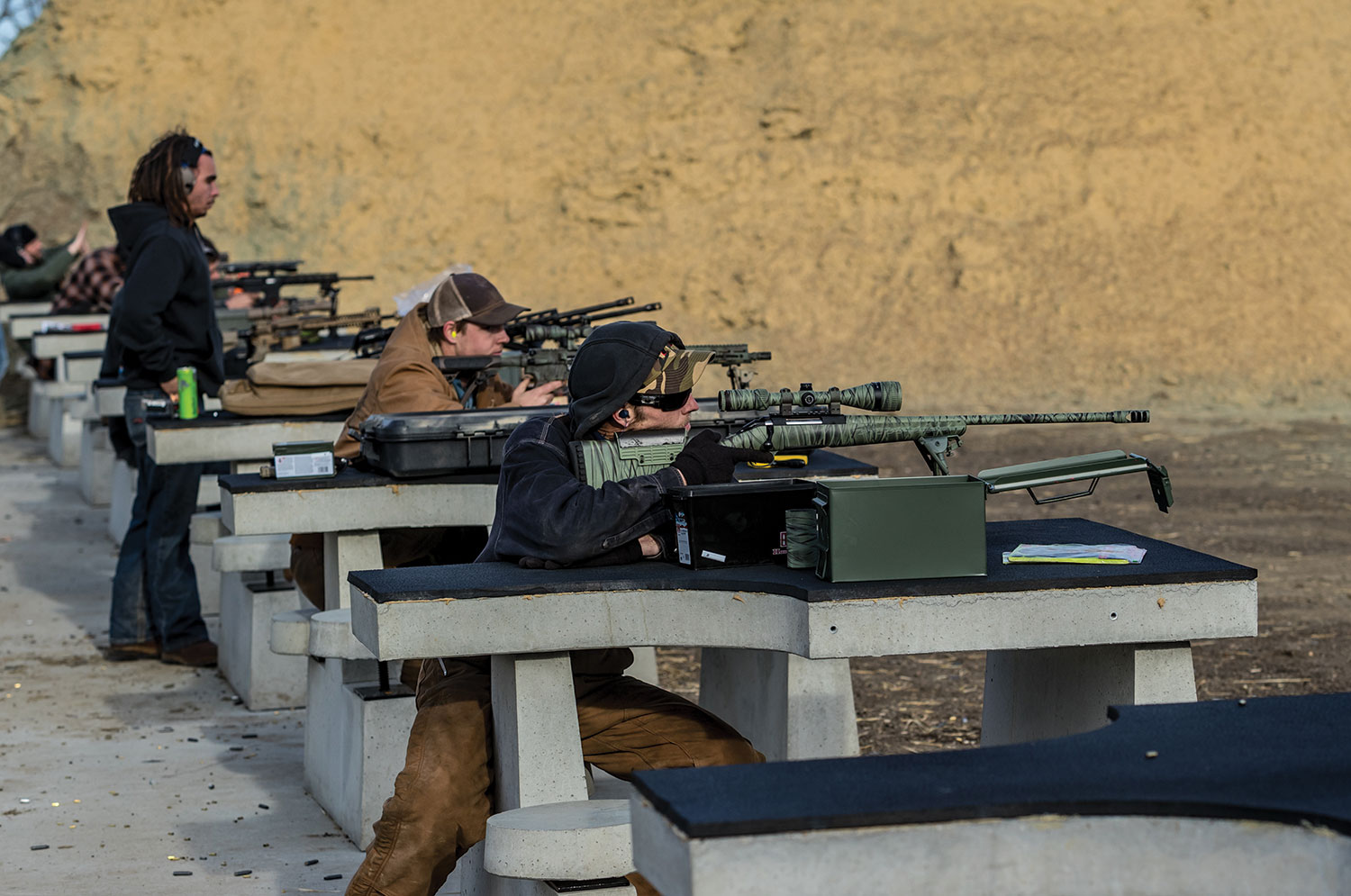
The Game and Fish Department manages five gun ranges on wildlife management areas in the state.
With North Dakota’s deer gun season opening in early November, many hunters will be looking for a place to sight in their firearms to get ready for the season.
The North Dakota Game and Fish Department manages five gun ranges on wildlife management areas in the state, and also partners with many local clubs around North Dakota to offer many other public shooting facilities.
The Department-managed ranges not only provide places for people to simply shoot, but they also make available places where they can hone their skills and sight in firearms prior to the deer gun season.
The five gun ranges managed by the Game and Fish Department include:
- Lewis and Clark WMA, located 6 miles southwest of Williston.
- Little Heart (Schmidt) Bottoms, located 12 miles south of Mandan off ND Highway 1806.
- MacLean Bottoms, located 2 miles south of ND Highway 1804, about 15 miles southeast of Bismarck.
- Riverdale WMA, located 2 miles southwest of Riverdale.
- Wilton Mine WMA, located 2 miles east of Wilton.
The Department may periodically close these ranges for routine maintenance and improvements. The current status of each range can be found online.
The website also provides a detailed listing of other shooting facilities in North Dakota.
Waterfowlers hunting from boats are encouraged to wear properly-fitted life jackets while on the water.
Hunting jackets with built-in life jackets are light and comfortable to wear. In addition, wearing a life jacket will not only keep the overboard hunter afloat, but also slows the loss of critical body heat caused by exposure to cold water.
Capsizing and falling overboard from small boats are the most common types of fatal boating accidents for hunters.
The North Dakota Game and Fish Department’s Private Land Open To Sportsmen Guide for 2020 is now available online at the Game and Fish website, gf.nd.gov. In addition, the free printed PLOTS guides are available at most license vendors and other locations throughout the state.
The guide features about 800,000 PLOTS acres. Because the guide is printed in mid-August, some PLOTS tracts highlighted in the guide may have been removed from the program since the time of printing. There will also be some PLOTS tracts where the habitat and condition of the tract will have changed significantly. Conversely, Game and Fish may have added new tracts to the program after the guide went to press.
To minimize possible confusion, Game and Fish will update PLOTS map sheets weekly on its website.
The PLOTS guide features maps highlighting these walk-in areas, identified in the field by inverted triangular yellow signs, as well as other public lands.
The guides are not available to mail, so hunters will have to pick one up at a local vendor, or print individual maps from the website.
Whooping cranes are in the midst of their fall migration and sightings will increase as they make their way into and through North Dakota over the next several weeks. Anyone seeing these endangered birds as they move through the state is asked to report sightings so the birds can be tracked.
The whooping cranes that do make their way through North Dakota each fall are part of a population of about 500 birds that are on their way from nesting grounds at Wood Buffalo National Park in Canada to wintering grounds at Aransas National Wildlife Refuge in Texas, a distance of about 2,500 miles.
Whoopers stand about five feet tall and have a wingspan of about seven feet from tip to tip. They are bright white with black wing tips, which are visible only when the wings are outspread. In flight they extend their long necks straight forward, while their long, slender legs extend out behind the tail. Whooping cranes typically migrate singly, or in groups of 2-3 birds, and may be associated with sandhill cranes.
Other white birds such as snow geese, swans and egrets are often mistaken for whooping cranes. The most common misidentification is pelicans, because their wingspan is similar, and they tuck their pouch in flight, leaving a silhouette like a crane when viewed from below.
Anyone sighting whoopers should not disturb them, but record the date, time, location and the birds’ activity. Observers should also look closely for and report colored bands which may occur on one or both legs. Whooping cranes have been marked with colored leg bands to help determine their identity.
Robert Timian Retires
Robert Timian, longtime North Dakota Game and Fish Department chief of enforcement, retired in August after 35 years with the agency.
Timian began his career as a district game warden in Makoti in 1985. In 1991 he was appointed district game warden supervisor in Dickinson, and became chief of law enforcement in 2004.
“I worked with Bob in many capacities in his time with the Department but closely for the last 15 years in his time as chief warden,” said Terry Steinwand, Game and Fish Department director. “He was fantastic in providing information on almost a daily basis and had great insight on enforcement issues, within and outside of the Department. To say I implicitly trusted Bob would be an understatement. I’ll miss having him around on a daily basis, but I also know his phone number, so he isn’t considered completely retired in my mind.”
Rowell Fills Game Warden Post
Jason Rowell of Valley City was hired as a district game warden and is stationed in Killdeer. Rowell graduated from Valley City State University with a bachelor’s degree in fisheries and wildlife sciences, with an emphasis in conservation law enforcement.


